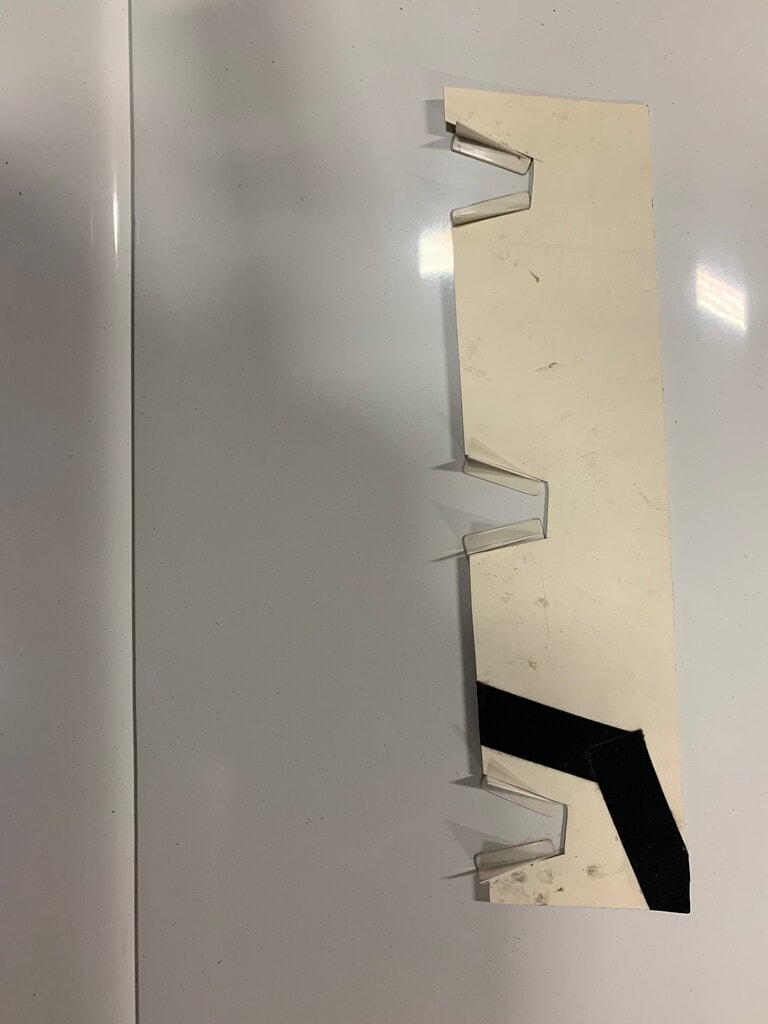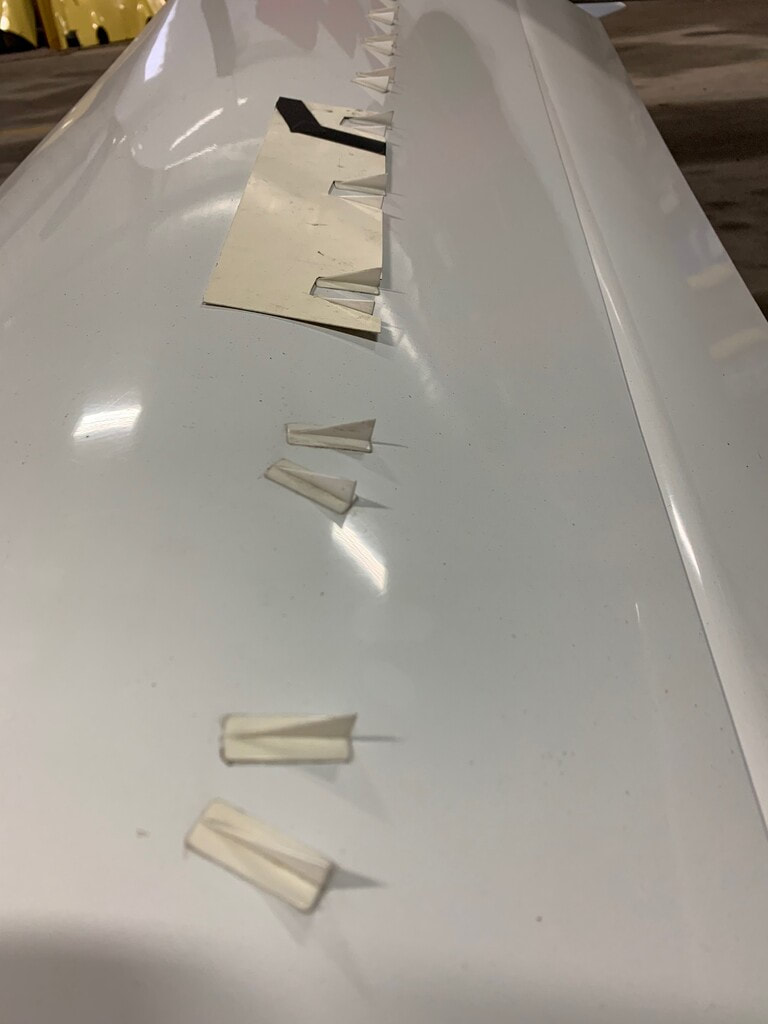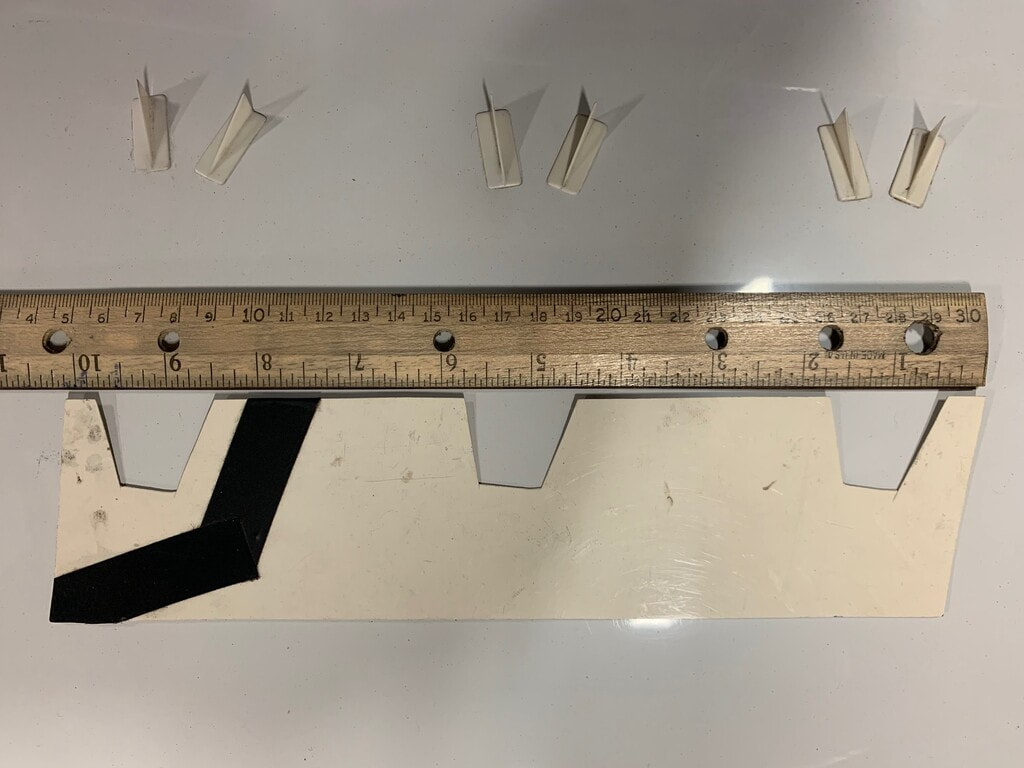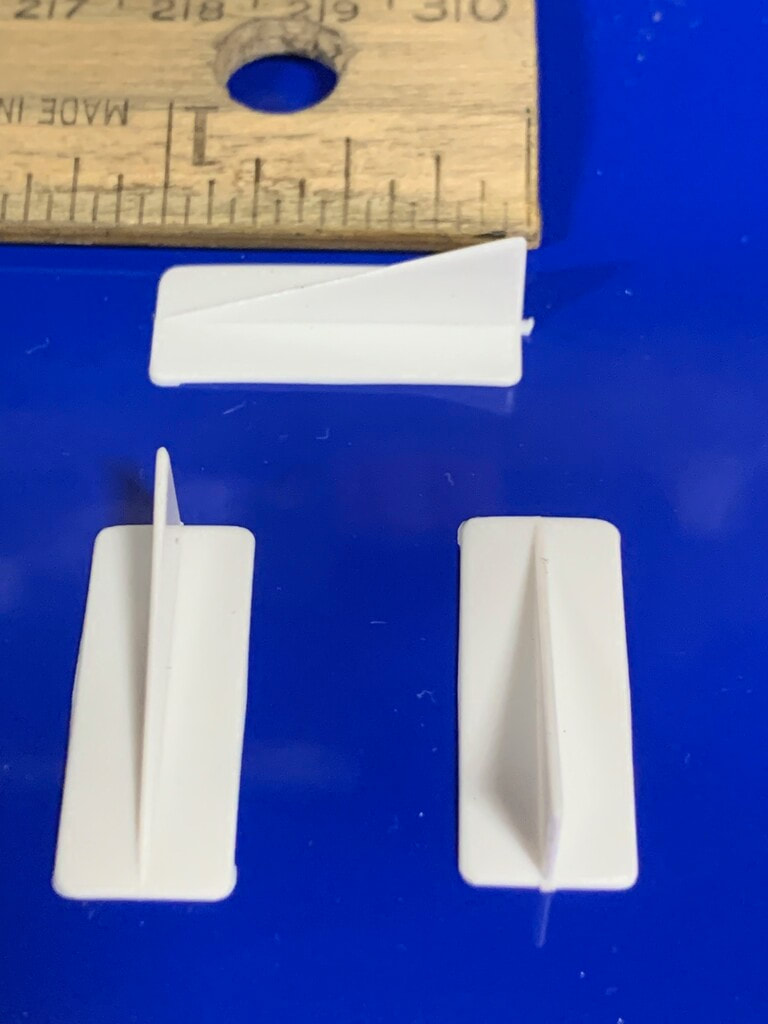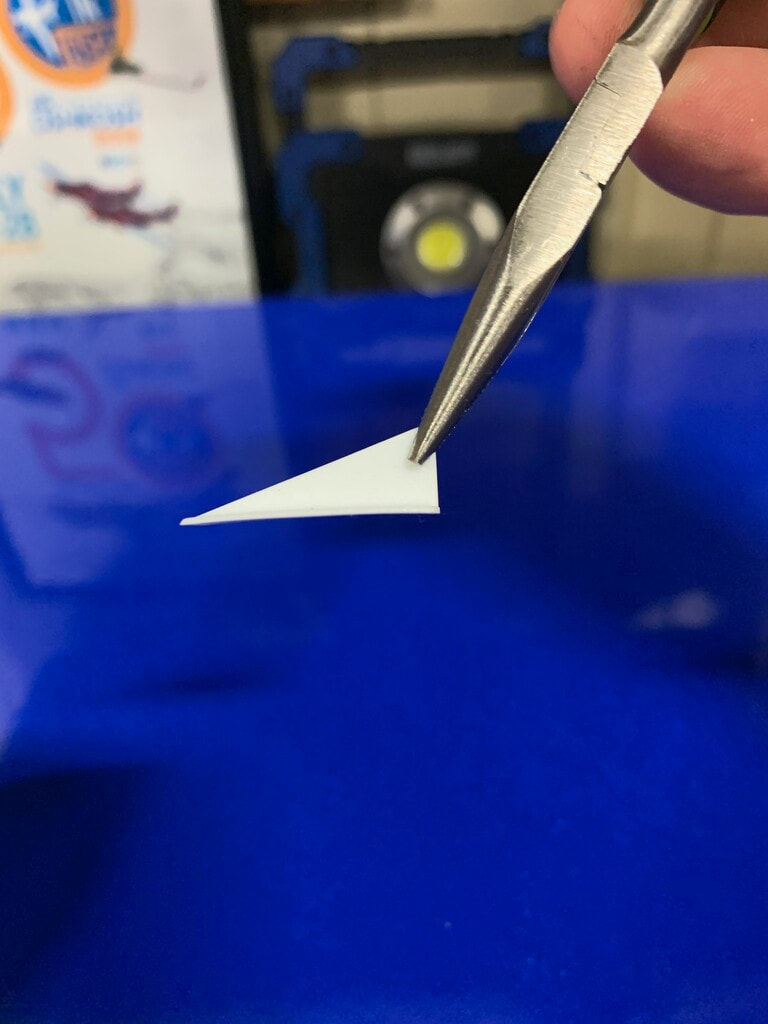|
Vortex Generators
The LS(1)-0417MOD airfoil model was tested in The Ohio State University’s 3x5 wind tunnel both clean and with the application of leading edge grit roughness and with vortex generators. The tests were conducted in both two-dimensional and three-dimensional model configurations and for steady state and unsteady flow conditions. Pressure data were obtained from six spanwise stations. The results showed that the application of the grit roughness reduces the maximum lift coefficients in all configurations. Unsteady maximum lift coefficients were always higher than those for steady state and had, generally, large hysteresis loops. In the case of the unsteady flow however, the hysteresis loops were smaller for the three dimensional (wing) flows. The smallest hysteresis loops were found at the tip spanwise station. The application of the vortex generators at certain chordwise locations reduced the hysteresis loops and increased the maximum lift coefficient, especially in the three dimensional configuration. |
| ||||||
|
Quickie Q1 GU Canard Instalation Instruction
These devices were developed for the original GU canard to reduce the effects that rain and or bugs have on the wing's lifting characteristics. Although developed by NASA for use on a different airfoil they have proven to be quite effective on the GU when flying through rain. The droplets disperse, then run off in streams between each set of generators. Normally, of course, these droplets stay on the rear portion of the canard and show a separation of flow. After testing these devices, we have found that one can expect the following:
| ||||||
|
Dragonfly GU Vortex Generators
They came across hard data for the University of Glasgow GU25 airfoil and it met their needs for the Quickie canard. The GU25 had previously been used on very slow airplanes like human powered aircraft and hang gliders. It seemed like an airfoil that would work for the Quickie. All was well with the Quickie until a test flight encountered some light rain and the airplane was almost crashed due to unexpected loss of lift due of contamination (water droplets) on the ca- nard. The Quickie was a neat little airplane, but people wanted bigger and faster.....enter the Dragonfly (and Q2). It was only natural for the designers of these follow-on airplanes to simply up-scale the size and the airfoils were included in the up- scaling. The GU25 was used on for the canard and the Eppler 1212 was used for the wing. If it is your goal to make buckets of lift at a low airspeed and don’t want the complexity/weight/drag of flaps, the GU-25 airfoil may be a good choice. If made correctly and maintained clean and dry it is laminar attached to 45% chord, turbu- lent attached to an impossible 95% chord and makes its lift at relatively low angle of attack. It is by all accounts a "super-lifter". It is little wonder that it was chosen to be the human powered flight airfoil on the Gossamer Condor. However, in the real world you have other considerations to keep in mind. There is dew, rain, bugs, dirt and imperfect fabrication. How does this affect a "super lifter" airfoil? Historically the GU25 has not faired so well. There is not much documentation on the effects of building the shape wrong, but aerodynamically the effects are fairly predictable. If you flatten out the “hump” (the most common mistake), the foil will make less overall lift and you will have to deploy the elevator farther to achieve slow flight. |
| ||||||||||||||||||
CCI Vortex Generators
|
| ||||||
Quickie GUv Vortex Generator Introduction
| Quickie GU Vortex Generators | |
| File Size: | 328 kb |
| File Type: | |
